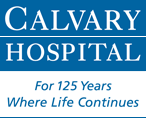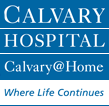April 16th is National Advance Care Decisions Day (NHDD), a time for us all to make sure our affairs are in order for our future health care.
We hope you will share the infographic we created and help us spread the word! Click the social media icons, or copy and paste/post this URL to your social media account — tell your loved ones why NHDD is important to you!
Getting Started
The first step is often the hardest to take. Begin with a discussion with family and/or friends and your medical team about your future healthcare goals and preferences. Advance Care Planning is the process of identifying your wishes for your health care at a future time when you may not be capable of making these choices for yourself.
Because your health care wishes may change over time, Advance Care Planning should be an ongoing conversation – allowing you to make adjustments as your needs and perspectives change.
- Fewer than 40 % of U.S. adults have created a living will (or similar document)
- 60% of U.S. adults are rolling the dice on who will be making decisions for them at the end of their lives.
- 25% of U.S. adults report never having thought of end-of-life planning at all.
ADVANCE CARE PLANNING STEPS FOR PATIENTS AND FAMILIES
Step 1: Start the conversation and choose your Healthcare Agent
We recommend choosing a person who will honor your wishes. This may be a family member or trusted friend. They will ensure that you receive the care you want.
- Your Healthcare Agent will advocate for you… This person will be the one who makes decisions on your behalf should you be unable to do so.
- It is also a good idea to name a second person known as an Alternate Agent. Advance Directives Forms Vary By State & are available through AARP
Step 2: Your Healthcare Agent will be able to state your wishes on your behalf regardless of your medical scenario.
Step 3: Clarify your Values and Beliefs tools, such as a values assessment, may help to pinpoint key feelings and opinions on some common situations and medical scenarios faced at the end of life.
- These tools can help guide the choices made by your medical care team in any number of unforeseen situations.
Step 4: Plan a meeting with your healthcare provider to review your plan, thoughts, and hope for treatment and care.
- Discuss your health care wishes with your healthcare provider(s) and provide them with a copy of your health care proxy.
Step 5: Complete a Living Will
- This document outlines what treatments you may or may not want in different medical situations. A Living Will works hand-in-hand with a Health Care Proxy.
Step 6: Keep your plan up to date
- Plan a schedule to periodically review your documents to ensure they are in line with your current feelings and perspectives.
Step 7: Share this information with your friends and family
- Even if you have a Healthcare Agent you may make healthcare decisions for yourself as long as you are able to do so.
- Only One In Three U.S. adults have any type of advance directive in place for end-of-life care.
- 36.6% of U.S. adults have completed an Advance Directive.
- 29.3% of U.S. adults have Living Wills.
A well-maintained Advance Care Document is a gift, that provides your loved ones with the confidence to act in your best interest
TO LEARN MORE ABOUT ADVANCE CARE PLANNING VISIT: WWW.CALVARYHOSPITAL.ORG/ACP


